Oil and Water
There’s something very important about oil and water that you probably already know: oil doesn’t mix with water! That explains why oil spills on the ocean float on […]
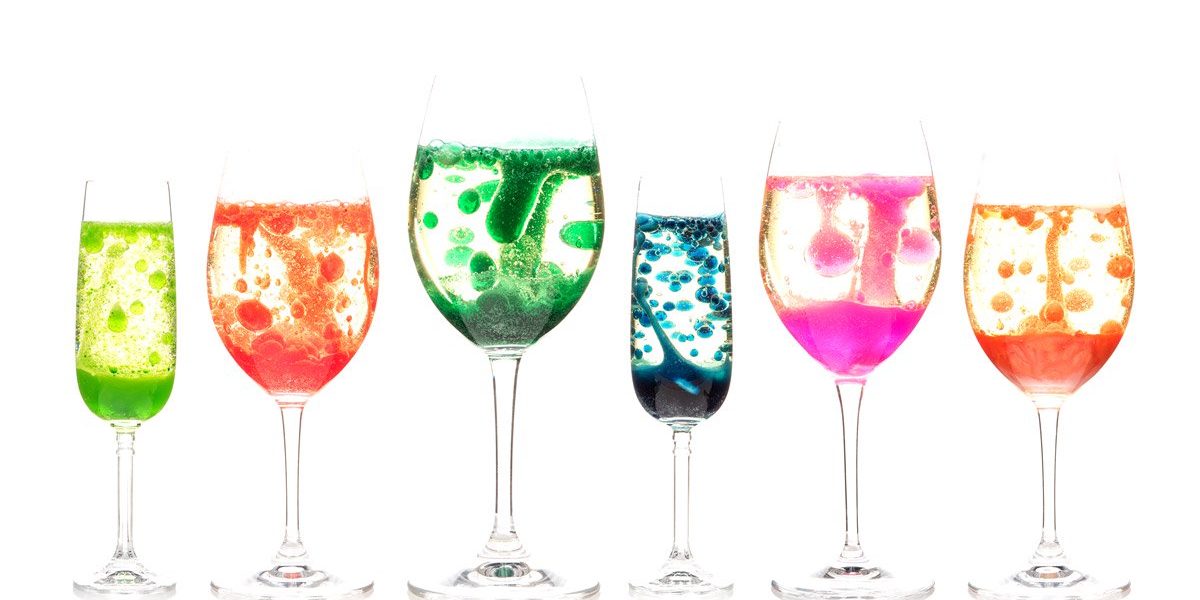
Learn how to make a wave bottle using oil, water, and a secret ingredient that makes the whole thing fizz, bubble, and erupt.
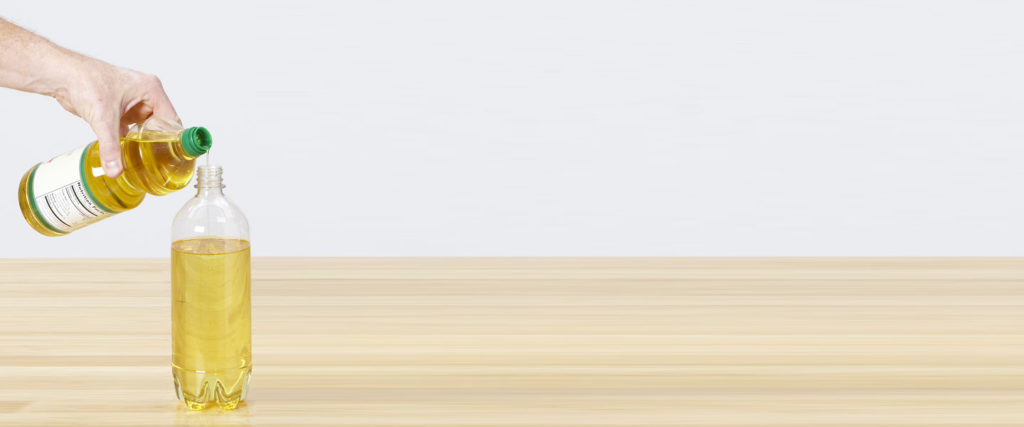
Fill the bottle three-quarters full with vegetable oil.
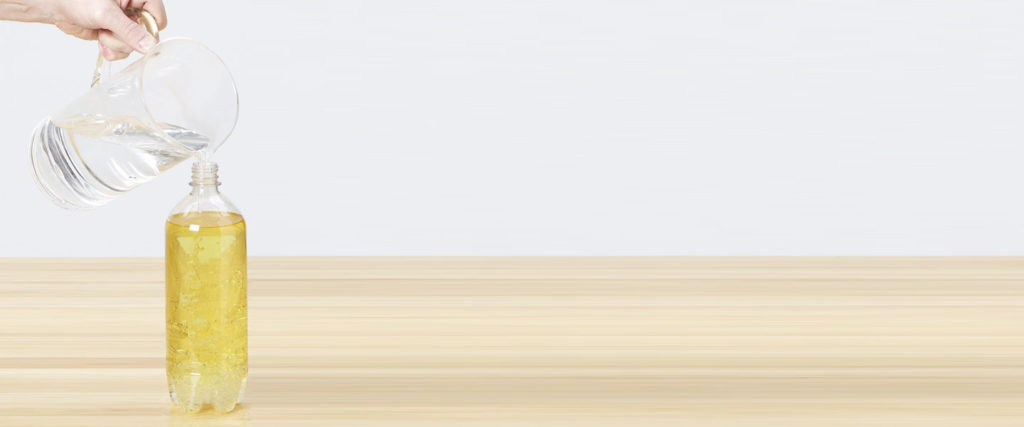
Fill the rest of the bottle with water (almost to the top but not overflowing).
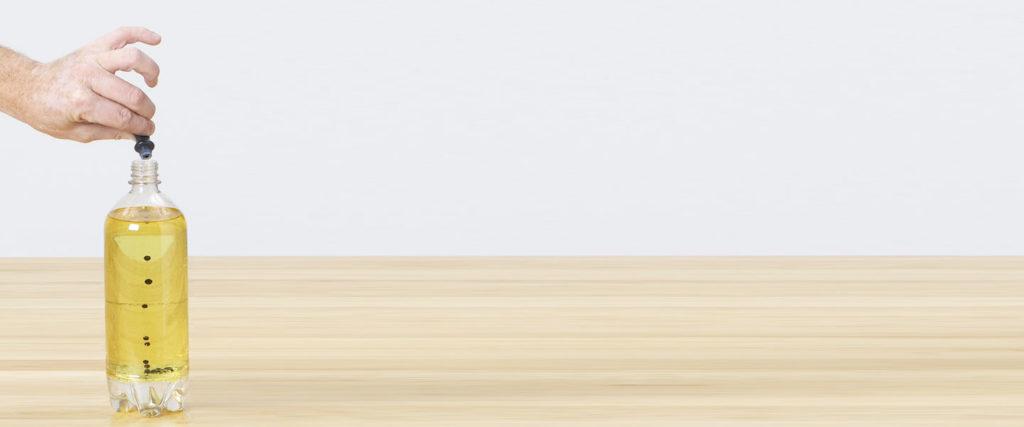
Add about ten drops of food coloring. Be sure to make the water fairly dark in color. Notice that the food coloring only colors the water and not the oil.

Divide the Alka-Seltzer tablet into four pieces.

Drop one of the tiny pieces of Alka-Seltzer into the oil and water mixture. Watch
what happens. When the bubbling stops, add another chunk of Alka-Seltzer.
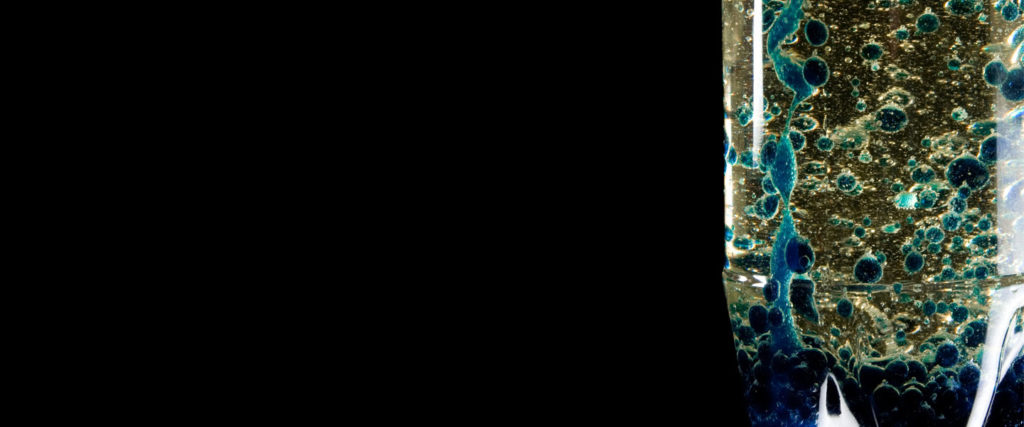
When you have used up all of the Alka-Seltzer and the bubbling has completely stopped, screw on the soda bottle cap. Tip the bottle back and forth and watch the wave appear. The tiny droplets of liquid join together to make one big wavelike blob.
First of all, you confirmed what you already know—oil and water do not mix. Even if you try to shake up the bottle, the oil breaks up into small little drops, but it doesn’t mix with the water. Why is it that oil and water are such opposites?
Oil and water don’t mix because of how their molecules are constructed. Water is what is known as a polar molecule. A water molecule is shaped like a V, with an oxygen atom at the bottom point of the V and a hydrogen atom on each of the two top ends. However, there is unequal sharing of electrons between the hydrogen and oxygen atoms. This means that the bottom of the molecule has a negative electrical charge, while the top carries a positive charge.
Vegetable oil, on the other hand, is a nonpolar molecule made of long chains of hydrocarbons—strings of carbon atoms bonded to hydrogen atoms. Unlike the water molecule, there is equal sharing of electrons between the carbon and hydrogen atoms. This means that the electrical charges of the atoms are not separated, so the molecules don’t have opposite positive and negative ends.
If you were to think of molecules like groups of people, the polar molecules hang out with other polar molecules, and the nonpolar molecules with other nonpolar molecules. This brings us back to the reason why oil and water don’t mix. Water is a polar molecule, and it just doesn’t hang out with nonpolar molecules like oil. Scientists say that oil and water are immiscible.
The adage “like dissolves like” will help you remember what will mix with what. Salt and water mix because both molecules are polar—like dissolves like. It’s also easy to mix vegetable oil and olive oil, or motor oil and peanut oil . . . but that’s gross.
You also noticed that food coloring only mixes with water . . . and now you know why. Food coloring is a polar molecule because it dissolves in water. In other words, food coloring and water are miscible. Vegetable oil is not affected by the food coloring because they are polar opposites.
Here’s the surprising part . . . the Alka-Seltzer tablet reacts with the water to make tiny bubbles of carbon dioxide. These bubbles attach themselves to the blobs of colored water and cause them to float to the surface. When the bubbles pop, the color blobs sink back to the bottom of the bottle, and the whole thing starts over until the Alka-Seltzer is used up. When the chemical reaction between the Alka-Seltzer and water is over and the bubbling stops, you’re left with a cool looking wave bottle that will sit proudly on your desk.
As you watched the bubbling color blobs rise and fall in the water, you probably thought to yourself, “This is just like a lava lamp . . . without the lamp!” On a side note, if you have no concept of what a lava lamp is, pull out your smart phone and Google it.
To make a cool looking lava lamp, you’ll need a large flashlight. Carefully rest the bottle of oil and water directly on the lens of the flashlight and repeat the experiment above with the bright light shining up and through the liquid. Groovy, baby!